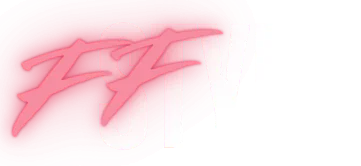In the world of modern art, where splashes of color and abstract shapes reign supreme, a darker narrative lurks beneath the canvas. Picture this: high-priced paintings changing hands faster than a magician’s trick, all while a shadowy game of money laundering unfolds. If you thought art was just about expression, think again—it’s become a playground for the financially savvy and the morally ambiguous.
As art collectors and investors dive headfirst into this vibrant market, they might just find themselves tangled in a web of intrigue. From anonymous buyers to inflated prices, the art world offers the perfect cover for those looking to clean up their dirty money. Buckle up as we explore the fascinating intersection of creativity and crime, where every brushstroke might just be hiding a scandal.
Table of Contents
ToggleUnderstanding Modern Art Money Laundering
Modern art serves not only as a form of expression but also as a complex vehicle for financial misdeeds. This section explores the intricacies involved in how the art world intersects with money laundering.
Definition of Money Laundering
Money laundering refers to the process of concealing the origins of illegally obtained money, typically through a series of transactions that make the funds appear legitimate. Criminals often engage in this process to disguise illicit earnings derived from activities like drug trafficking or fraud. In many cases, institutions, such as banks or art galleries, facilitate these transactions, further obscuring the line between legal and illegal funds. The primary stages involve placement, layering, and integration. Each stage serves to complicate the traceability of the funds, allowing perpetrators to enjoy their profits without raising suspicion. Regulatory bodies actively work to combat these practices, implementing stringent rules for verifying the source of funds in numerous industries.
Role of Modern Art in Financial Crimes
Modern art plays a significant role in financial crimes, providing a unique avenue for money laundering. High-value artworks often sell for millions, offering a convenient method for concealing and transferring funds. Art transactions frequently lack transparency, making it easier for criminals to manipulate prices, inflate values, and create fictitious sales. Auctions and private sales enable individuals to obscure their identities through shell companies or intermediaries. This anonymity, combined with fluctuating art market values, contributes to the challenges faced by regulatory authorities seeking to prevent illicit financial activities. Additionally, the growing demand for art from emerging markets further complicates efforts to track money flow within this enigmatic field.
Historical Context of Art and Money Laundering

Modern art’s vibrant appeal often obscures its role in financial misconduct. The intertwining of creativity and crime has historical roots that warrant exploration.
Notable Cases in History
In the early 2000s, a notorious case involved a Russian oligarch purchasing a painting for an inflated price, turning art into a vehicle for illicit funds. This scenario isn’t isolated; numerous instances exist where high-value pieces have changed hands under suspicious conditions. A 2014 investigation uncovered links between a London gallery and organized crime networks, further highlighting how art transactions can facilitate money laundering. These cases underscore the merger of art markets and criminal enterprises, revealing the darker motivations behind seemingly benign sales.
Evolution of Art Market Practices
Art market practices evolved significantly over the last few decades. Auctions and private sales increasingly embraced anonymity, allowing buyers to obscure their identities. This shift benefits those engaged in money laundering, enabling illicit actors to integrate funds without scrutiny. Additionally, the rise of online art platforms has further loosened regulations, complicating efforts for authorities to monitor and track transactions. Innovative technologies, while enhancing access to art, also foster an environment ripe for exploitation, illustrating the ongoing challenge of maintaining integrity in the art world amidst declining oversight.
Mechanisms of Modern Art Money Laundering
Modern art functions as a lucrative and discreet avenue for laundering illicit funds. High-value artworks play a critical role as they provide an opportunity to mask the origins of illegally obtained money.
Use of High-Value Artworks
Collectors often purchase high-value artworks to convert illicit cash into perceived legitimate assets. Art prices can surge dramatically, allowing for substantial capital gains. A single transaction can exceed millions, making it easier to integrate dirty money into the mainstream economy. Artworks often appreciate over time, providing both a safe haven and a means for financial growth. Lauded pieces from renowned artists can fetch inflated prices, enabling criminals to disguise the true source of funds effectively. Art retains significant value, allowing for fluidity in financial dealings with minimal scrutiny.
Exploiting Art Auctions and Galleries
Art auctions and galleries frequently serve as essential platforms for laundering operations. These environments allow buyers to maintain anonymity, with transactions often lacking thorough documentation. Auction houses sell artworks with minimal history disclosures, enabling opaque dealings to flourish. Some galleries have been linked to organized crime, facilitating questionable transactions as part of their business model. Criminals utilize these venues to inflate prices through fictitious bids, thus distorting market values. Furthermore, the rise of online auctions introduces more vulnerabilities, as regulations in digital spaces remain less stringent. The complexity of art sales fuels an undercurrent of illicit activity, complicating efforts to enforce transparency.
Recent Trends in Modern Art Money Laundering
Recent developments show a rising trend in modern art money laundering, influenced by digital currencies and globalization.
Influence of Cryptocurrency
Cryptocurrency plays a significant role in contemporary art transactions, attracting those aiming to obscure the origins of their funds. Digital currencies offer anonymity, making it challenging for authorities to trace illicit money. Art dealers increasingly accept cryptocurrencies, which facilitate large, untraceable transactions. Platforms like Ethereum allow for smart contracts, further complicating regulatory efforts. Galleries may engage in these transactions to attract collectors who prefer the privacy of blockchain. The rise of NFT marketplaces adds another layer, enabling high-priced artworks to change hands while remaining outside traditional oversight.
Impact of Globalization on the Art Market
Globalization has reshaped the art market, opening avenues for money laundering through increased access to international buyers and sellers. Cross-border transactions allow collectors and criminals to exploit regulatory disparities between countries. Auction houses now attract buyers from emerging markets, enhancing anonymity in art dealings. This increased accessibility contributes to inflated pricing, making it easier to launder money. The art market’s international nature complicates enforcement, as various jurisdictions struggle to coordinate. As more art transactions occur in less regulated environments, perpetrators can more easily manipulate systems designed for transparency.
Legal Implications and Regulatory Responses
The intersection of modern art and money laundering raises significant legal issues. Various laws and regulations aim to curb illicit activities in the art market.
Current Laws and Regulations
Anti-money laundering (AML) laws apply to art dealers and galleries. Financial Action Task Force (FATF) guidelines urge countries to implement measures for transparency in art transactions. In the United States, the Bank Secrecy Act requires certain art dealers to report suspicious activities. European Union regulations also emphasize due diligence for high-value art sales. Countries like the UK and Germany have enacted laws targeting the art market. These regulations include obligations to verify the identities of buyers and sellers. However, compliance remains inconsistent among art businesses worldwide.
Challenges in Enforcement
Enforcement of existing laws presents multiple challenges. Anonymity in art transactions complicates tracking the origins of funds. Many dealers operate without strict oversight, making regulatory compliance difficult. International aspects of art transactions further complicate enforcement efforts. Jurisdictional discrepancies hinder coordination between authorities in different countries. Limited resources for law enforcement agencies often lead to under-prioritized art fraud cases. The rapid evolution of digital currencies creates additional obstacles for regulators aiming to trace illicit money. Regulatory bodies face the ongoing struggle of adapting to the dynamic landscape of the modern art market.
The intersection of modern art and money laundering reveals a complex web of financial intrigue. As the art world continues to evolve with digital currencies and globalization, the challenges of maintaining transparency grow more daunting. High-value artworks provide a tempting avenue for those looking to obscure the origins of their funds, complicating efforts to enforce regulations.
While authorities strive to implement measures for accountability, the art market’s inherent anonymity and the rise of online platforms create fertile ground for exploitation. Understanding these dynamics is crucial for anyone navigating the modern art landscape, as the allure of creativity often masks darker financial motives lurking beneath the surface.




